| URLs in this document have been updated. Links enclosed in {curly brackets} have been changed. If a replacement link was located, the new URL was added and the link is active; if a new site could not be identified, the broken link was removed. |
Reaching the Engineering and Science Communities: New Technologies and Approaches at MIT
Engineering Librarian for Technology-Based Services
darcy@mit.edu
Stephanie Hartman
Engineering Librarian for Information and Outreach Services
hartman@mit.edu
Angela Locknar
Instruction Coordinator for Engineering and Science Libraries
locknar@mit.edu
Massachusetts Institute of Technology
Cambridge, Massachusetts
Abstract
Outreach and promotion of library resources and services is an increasing challenge in the online world since many of our users do not often visit the library. This is particularly true in science and engineering libraries, where much of our content is available online and our users tend to be technologically savvy. We need to find new ways to reach our communities and draw them back into the library, both physically and virtually.In this article, we will discuss various approaches and technologies that the Massachusetts Institute of Technology Engineering and Science Libraries are employing to educate our users about the resources and services available to them.
Introduction
Academic libraries have faced a great deal of change in recent years. Technology has impacted libraries significantly, whether it is decreased door counts or increased use of virtual resources. Users have more options than ever for filling their information needs. Librarians must be creative and innovative in order to serve their users to the fullest. While some librarians bemoan the lack of foot traffic, in truth we are reaching more users in a variety of ways, many who have never set foot in the library. As our collections and services move into an increasingly virtual environment, we give our users greater access to resources which is exactly what they want.
This does not mean we are letting our physical space gather dust and cobwebs. Quite the opposite. We continue to think about and improve our physical spaces to enhance the user's experience. When patrons come to the library they find new group study spaces, improved quiet areas, and new collections. While finding an article on the shelf, they might see a new journal that grabs their attention, or run into a colleague to talk with about their research. They may talk to a librarian who tells them about a new resource, or they might see a poster advertising a class on Google Scholar and make a note to attend. The library is much more than a place to get a unit of information. It is a place to discover and explore information, and to communicate and exchange ideas with others.
We now must work harder than ever before to get out into our users spaces
(both physically and virtually) and to draw our users into the traditional
space of the library. What follows is an overview of the initiatives and strategies
we in the Engineering and Science Libraries (ESL) at the Massachusetts Institute
of Technology (MIT) have implemented to reach out to our users, in an effort
to draw them into the libraries either physically or virtually.
The Web: Getting Into Our Users' Space
The web is an easy place to reach users in their own space since they can access content while sitting at computers in their offices or dorms. While they are navigating to the content they came for, we need to unobtrusively replicate the accidental learning and exposure to resources and services they could get by coming into the library.
It is impossible to discuss the outreach efforts of the Engineering and Science Libraries without discussing that of the entire MIT Libraries web site. MIT has a centralized web presence for all of its libraries (five divisional libraries and four branches) and outreach via the web has been developed by a group of system-wide staff. Staff members from the ESL have been active contributors in this effort. The user community supported by the ESL makes up approximately 70% of the MIT campus so any centrally initiated projects or services (such as the MIT Libraries web site) have a large impact on our user population.
Home Page
An obvious way to reach our users is through our central home page: [Figure 1]. It has the easiest URL to remember, many sites across the MIT system outside of the library link to it, and it is the online gateway to our resources and services.
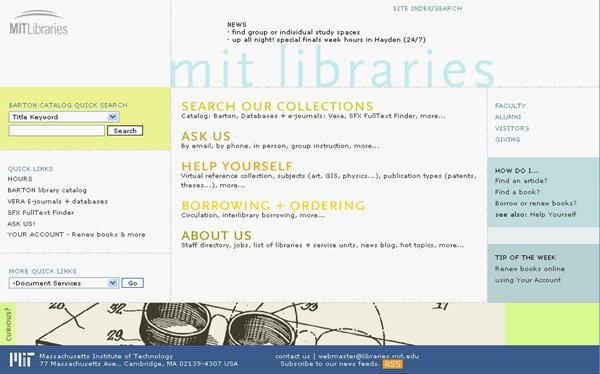
Figure 1: MIT Libraries Home Page - http://libraries.mit.edu
The design of a library home page is very challenging -- there are hundreds of resources and services that we would like our users to know about but we can not highlight them all on the top page. At MIT, in addition to the regular navigation and links, we have created a few features on our home page that allow us to promote new or existing resources and services.
In the lower right is our "features" section, which simulates a tidbit of information users might have learned from speaking with a librarian if they had come to the library. Depending on what is being featured, the title of this section changes: Featured Resource (or Service), Tip of the Week, Hot Topic, etc. Librarians across the system are encouraged to contribute ideas and content for features. We currently have an archive of about 20 items that we rotate through when no new features are waiting to be highlighted. Examples of these are the "Ask Us!" e-mail service, the WorldCat database, and the Interlibrary Borrowing Service.
Another feature is our "curious stripe" which simulates a poster, sign, book cover or other visual item in the library that might have grabbed a user's attention. Our curious image relates to content or services and is visually intriguing but is not usually apparent as to what it is. Users have to click on the image to find out more. The curious stripe is changed periodically, and we have about 15 standard stripes that we can rotate through when there is not a new one for a timely event like a class. The "curious stripe" in Figure 1 is a slice from a patent for the SlinkyTM toy and links to information about a class on patent searching.
Like many other libraries, we have news headlines on our home page to alert our users to new resources and events. These headlines link to our news page, which has recently been converted to a blog. This change has given us many more options for promoting our news stories to our users.
News Blog and RSS Feeds
Using a blog for news stories in a library is not new, but it is important to recognize all the opportunities to reach users this technology has allowed.
It is easy to repackage blogged news stories in different ways and in different places, which is essential for reaching our users. The MIT Libraries home page still requires that our users come to us. They must consciously visit the web space that is owned by the library. Many of our users simply do not come to our space because they are able to jump straight to content without going to a library page at all. (Most of MIT's e-resources are set up with IP address authentication, so our users can go straight to journal web pages if they are on campus.) The content of the news stories in a blog are separate from the formatting and can be extracted into an RSS feed. An RSS feed takes the news stories and allows them to be reused in a number of ways. Most importantly, it allows the content of the stories to be taken out of the library's "space" and into our users' space.
An RSS feed can be read by a "news reader" (e.g., software that takes the stories in multiple RSS feeds chosen by the user and presents them in a format that is customizable and easy to use). For example, a user at MIT might "subscribe" to RSS feeds from the New York Times, Nature, and the MIT Libraries News feed and read them using the web-based news reader {Bloglines} [Figure 2]. Every morning, the user can go to the news reader and look at the news centrally in the preferred format, without having to visit the web pages of all those different sites. Thus, the user will find out about our special finals week hours or workshops being offered without needing to visit our web page daily. We have reached our users without requiring them to come to us.
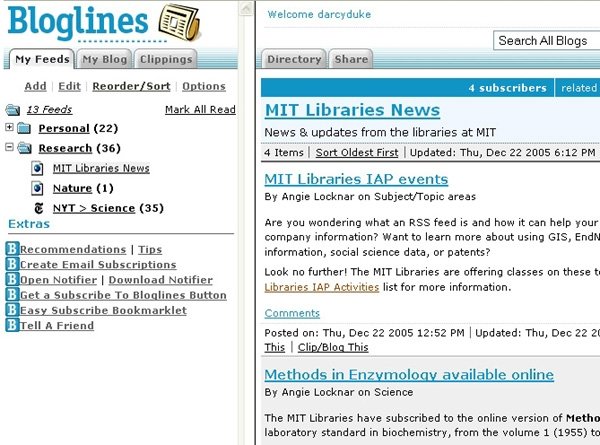
Figure 2: Bloglines, a web-based news reader
Within the blog, we assign each of our stories to one or more pre-set categories and can set up separate RSS feeds for each category. Users can subscribe to our main RSS feed that has all the news, or they can subscribe to just stories about events in the library, or only book sale announcements, or stories that are related to science resources and services. Our future plans include feeds for new books that are generated automatically from our OPAC (separate from the news feeds).
RSS feeds can also be embedded into web pages, both within the library web site and on pages outside of the library. Once set up, our headlines will appear in those pages and will be updated as new stories are added, without any additional coding. For instance, the headlines on the home page of the Barker Engineering Library at MIT are created using the "engineering" RSS feed from the main MIT Libraries News blog. When a librarian adds a new story under the category "engineering" on the main news blog, the headline for that story automatically appears on the engineering library home page [Figure 3]. We are in the process of incorporating these feeds into every library's individual home page, and we will use the feeds to create headlines on the desktop of every PC in each library [Figure 4]. Our users could also take our feeds and incorporate them into the content of other pages. For instance, a professor could embed them on a course page. Once stories are available as RSS feeds, they are free from formatting and can be reused in ways we haven't even thought of.
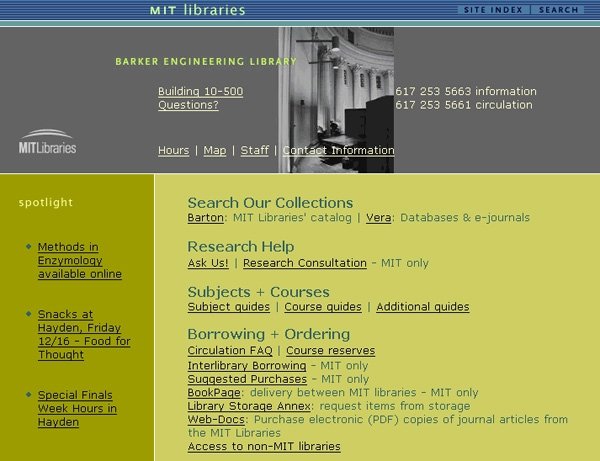
Figure 3: Barker Library home page with headlines created from RSS feeds
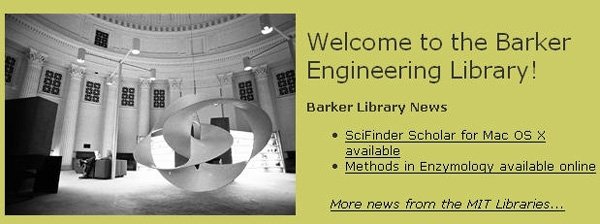
Figure 4: Desktop wallpaper of computers in the Barker Library, with headlines created from RSS feeds
Another advantage of having news handled on a blog is that posting new stories is easy. At MIT, switching our news page to a blog has completely changed how we handle our news because it has enabled more staff to get involved and post stories. We have more stories being posted than ever before, and since posting to a blog uses a web interface that requires little or no HTML knowledge, staff that never created web content before can write and post news stories. At least one individual from each of our libraries has been trained to post to the blog, and additional bloggers continue to be added.
Social Bookmarking Tools
MIT is investigating other new technologies that will put content into our users' online space. Social bookmarking tools such as del.icio.us and CiteULike are popular new web applications that allow a user to "tag" (assign subject headings to) web resources and create RSS feeds for those selected resources.
We have been experimenting with using del.icio.us to create and update our {Virtual Reference Collection} (VRC) page. To create the VRC page using del.icio.us, we visit each site we want to include, tag it with our pre-arranged categories, and embed the RSS feeds that are created for each tag into the VRC web page using a tool called Feed Digest that creates a snippet of Javascript for displaying the contents of an RSS feed on a web page. There are two advantages to this approach. First, the VRC can easily be updated by a librarian with no HTML skills by merely bookmarking new sites in del.icio.us and tagging them. Second, our users might find these resources simply by browsing around in del.icio.us, which many del.icio.us users do. Therefore we have allowed our users to discover our resources in their space, not ours. If our users find them useful, they may assign their own tags to the items (perhaps different from what librarians would choose) and possibly help even more users discover these resources.
There are many ways we could use social bookmarking: as a tool for creating subject guides, for discovery of our bibliographic databases, or for adding user-provided subject headings in our catalog. Our ideas are limited only by the time we have to spend on these projects. Since these social bookmarking tools are available to anyone, our users may already be creating some of these tools for library resources.
Web 2.0 Applications
The idea that users are creating the interfaces to our content (such as social bookmarking and RSS) is at the heart of the concept of "Web 2.0." Wikipedia defines Web 2.0 as "a transition of web sites from isolated information silos to sources of content and functionality, thus becoming a computing platform serving web applications to end users" (Wikipedia 2006). What this means is that instead of being the place where users come for information, web sites are now also becoming providers of information that can be reused and mixed with other sites and applications by the end user. The RSS feed applications we have discussed illustrate this trend.
Linking our online holdings to Google Scholar records is one Web 2.0 application that MIT has already implemented. Google Scholar strives to provide the full text of the articles it indexes, but some content is available only by subscription. MIT was one of several institutions that worked closely with Google to establish a method for providing links to library holdings. Because of this, once an institution has made arrangements with Google, its users can simply select their institution on the Google Scholar preferences page and appropriate links to their library's online holdings will appear whenever the full text is not available.
The MIT Libraries are just starting to investigate the possibilities of other Web 2.0 applications and are using the tools other libraries and library users are creating as inspiration. For example, John Udell's Library Lookup Project (Udell 2005) created a bookmarklet that can let you know if your local library owns a book or not. If you were looking at a book on Amazon or the Barnes and Noble web site, you could click on the bookmarklet in your browser and it would open a new window with your library's record for that book.
Now, instead of a bookmarklet, you can install a script that will automatically insert a link in Amazon below the title of any book that will indicate the status of the book in the library. Clicking on the link will bring you to the library record for that book. See this example adapted for the Seattle Public Library (Mundell 2005) [Figure 5]. These and other new Web 2.0 applications hold a lot of promise for inserting the library into our users' space.
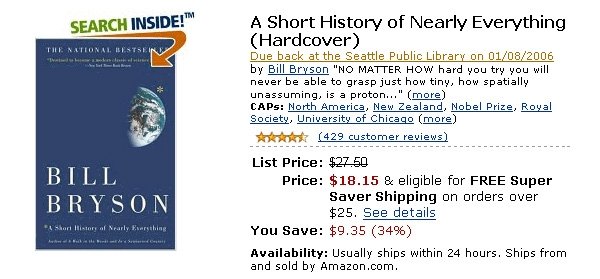
Figure 5: Web script that shows Seattle Public Library holdings of a book in Amazon
Workshops and Seminars: Drawing our Users Back In
While we attempt to get out into our users' space, we also want to bring our users into the library. Though many of our resources and services are available online, it is understood that some learning, exploration, and collaboration are best done in person. One way we are trying to draw users to us is to offer workshops and seminars that have strong appeal and direct relevance to their research and school work. While attending these classes in our library buildings, they are exposed to resources and expert staff they might not otherwise find by searching and browsing online by themselves.
We know MIT users tend to be early adopters of new technologies, and consequently have experimented with workshops geared toward applying new technologies to research, such as Keeping Current: Using RSS Feeds to Stay Ahead in Your Research or Google, or Google Scholar: That is the Question! These workshops have been incredibly successful, over-filling our small instructional classroom (20 computers) with students from all areas of engineering and science. Copies of handouts for these and other sessions can be found at {http://libraries.mit.edu/ask-us/instruction/workshops.html}.
Most of our seminars and workshops originated as classes during MIT's Independent Activities Period (IAP) -- this is our January period that allows time for flexible and creative classes to be taught. Students and others in the community are actively looking to learn new things and the ESL takes advantage of this by offering a wide variety of courses (complete listing: {MIT Libraries IAP courses}). Several of these classes have been offered at other times of the year and even expanded into seminar series such as Tools for Finding Biological Information and Chemical Information Workshops.
In order to make our classes more relevant to our users, many of our instructional efforts have switched from tool-based to skill-based topics. Past classes focused on teaching a particular tool, such as Sci-Finder Scholar or Web of Science. People outside of a certain discipline (such as chemistry) are usually unfamiliar with these tools and are not attracted to the class even though they would benefit from it. By focusing our classes on the tasks the users are interested in ("Finding Biological Information") rather than the tools themselves, we can entice users to learn about these valuable tools. This is important since many of the students, faculty, and researchers at MIT are delving into disciplinary areas that are unfamiliar and they need everything from basic background on a topic to in-depth training. Since implementing these changes in the fall semester 2004, we have seen an increase in both workshops taught and attendance:
| Number of Sessions | Number of Attendees | |
|---|---|---|
| FY 2003/04 | 13 | 116 |
| FY 2004/05 | 17 | 181 |
| Jul-Dec 2005 | 7 | 133 |
Collaboration with others at MIT has allowed the ESL to take advantage of the depth of knowledge on campus and extend our class offerings beyond traditional engineering and science library instruction. Inviting lecturers from the MIT Center for Cancer Research and the Broad Institute to teach bioinformatics using library resources has increased our exposure in those research centers, and provided expertise that would have taken us years to develop. Other collaborative workshops include Company Research for Engineering and Scientists: Getting to Know Your Prospective Partner or Employer. In this session, we introduce students to a variety of resources for basic information on a company, such as company directories, basic market information, creating a company list for a particular industry or locale, or articles about the company. Even though we are not experts in this field, ESL librarians teach this course which is adapted from workshops sponsored by our management and social sciences library (a management/social science librarian also attends our class to answer more in-depth questions). We will be expanding this idea with a similar workshop on industry information.
Other Ways We Reach our Users
Hook them Early: Orientation Activities
One of our greatest resources is our staff, therefore we continue to find ways to meet and interact with our communities face to face and build relationships. Historically, the MIT Libraries did not participate in campus orientation for undergraduate or graduate students. In recent years we have increased our participation in orientation events greatly with both groups. At MIT, it is easy to work engineering and science themes into our orientation activities. With undergraduates, we take a broader approach because we want them to know we are here to help before things get overwhelming. During campus orientation this year we had an information themed ice cream social, library tours (led by students, not librarians), fun giveaways including temporary tattoos and keychain levels, and a challenging {geocache} that led students on a journey to all the libraries on campus (GPS units were available for check out). We introduced the Libraries in a positive, relaxed fashion with the hopes that when students are later stressed over a paper, they will remember the friendly face that fed them ice cream, and come ask for help.
For graduate students, we co-hosted the annual Graduate Student Reception with the Graduate Student Council (GSC). The Libraries were initially approached for the reception because of a physical space need, but over the years the relationship with the GSC has grown significantly. Most recently, the GSC asked the Libraries to develop a new formal instruction session during orientation offered to all new graduate students. Over 250 students attended this session. We will continue to work with the GSC and other groups, such as the International Students Office, to reach students. Subject librarians also visit departments and hold informational welcome sessions to teach students about the more specific resources they may need for their studies.
Reinvigorating the Physical Space
As long as we keep the lights on, we want people in our physical space. We work to make the space more inviting via design decisions, as well as exhibits, events and collections that draw users into the library. A collection of fun books in the fields of Engineering and Computer Science, shelved in a prominent and comfortable area, is being developed. We hope to build this collection through recommendations from students, faculty and staff. Inspired by the library at the Franklin W. Olin College of Engineering, we have added various educational toys, such as Zome to the library space to promote creativity, learning, and fun.
Group study areas have been added in both the Engineering and Science Libraries. The media room in the Barker Engineering Library is being renovated to make it a more up to date, flexible, and comfortable space which will serve the community in several ways, from hosting small class viewings to possible art exhibits. One of our main user spaces is the reading room, located in the Great Dome, one of the most visible structures on our campus. While beautiful and majestic, the space is very inflexible due to large non-moveable shelving, inadequate lighting, and dark, heavy furniture. Renovation plans include transforming the reading room to provide a more flexible, inviting space to serve as an exhibit and/or function space and to house our current journals. We want our space to draw people in from the community, engage them, and teach them something unexpected along the way.
The MIT Libraries are fortunate to have space in the new Stata Center, which houses the Computer Science and Artificial Intelligence Labs. Our space is a small, brightly painted (red), two-story kiosk, right on the Student Street and was appropriately named the {Information Intersection}. It is outfitted for small instruction groups or individual study and often serves as a spot for several people to read, study, or eat. A bookdrop and six terminals are located on the outside of the kiosk, as well as several shelves for a book exchange on the inside. This space allows the Libraries to experiment with different marketing strategies and explore the various ways users can interact with information outside of the library. Furthermore, it embeds the Libraries in a very high traffic area in a central building for many of our departments.
Creative and Proactive Staffing
The Engineering and Science Libraries have also thought creatively about job descriptions and staffing decisions. In the last year, several jobs have been restructured to provide more direct outreach and connections to key user communities. The Electrical Engineering and Computer Science (EECS) department includes over 2,000 students, staff, and faculty. Because of this, the department liaison responsibilities within the engineering library have been divided. The new librarian for Computer Science position has been structured to learn from and take advantage of the department's expertise in information searching, manipulation, retrieval, and display. With this change, we hope to build new relationships and ensure the Libraries' relevance to the computer scientists on campus.
Conclusion
There are many ways to engage our users through new technologies, workshops offerings, orientation activities, and inviting spaces. In the ESL, we continue to explore new ways to connect with both traditional library users and new users who have never visited the library. By viewing changes in technology and communication patterns as opportunities to reach our users rather than as barriers that keep them away, we are better able to serve our community.
Acknowledgements
The authors would like to thank Nicole Hennig and Tracy Gabridge of the MIT Libraries for their assistance in writing this article.
References
Mundell, Carrick. 2005. Amazon - Seattle Public Library Lookup Greasemonkey Script Updated. [Online]. Available: {https://web.archive.org/web/20130225053726/http://userscripts.org/scripts/show/8432} [January 13, 2006]Udell, John. 2005. The LibraryLookup Project. [Online]. Available: {http://jonudell.net/LibraryLookup.html} [January 13, 2006].
Wikipedia contributors. 2006. Web 2.0. Wikipedia, The Free Encyclopedia. [Online]. Available: http://en.wikipedia.org/wiki/Web_2.0 [January 13, 2006].
| Previous | Contents | Next |
